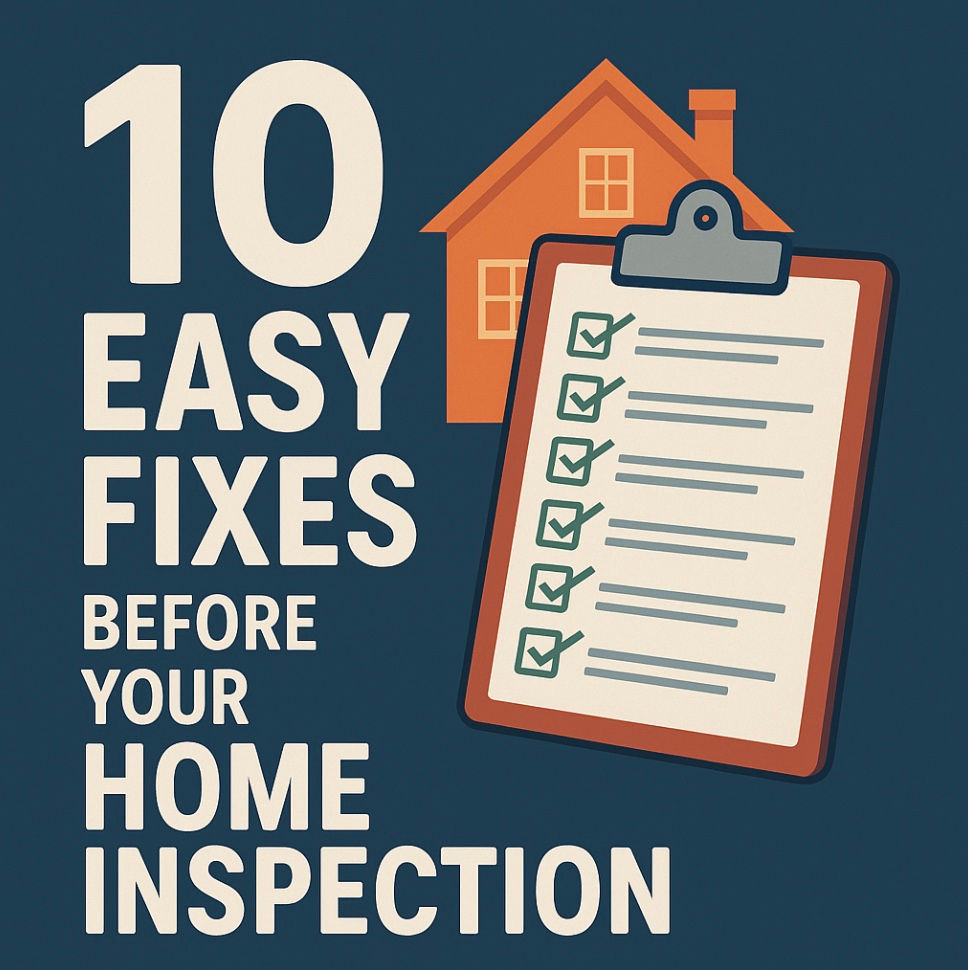Aging in Place
- timrubash
- Jul 29
- 6 min read
Aging in Place: Pros and Cons of Rambler, Two-Story, Multi-Level, and Split-Level Homes
As Americans live longer and healthier lives, many older adults are choosing to age in place—that is, to remain in their own homes and communities as they grow older. This decision brings comfort, familiarity, and independence. However, not all homes are created equal when it comes to supporting aging in place. The layout, accessibility, maintenance needs, and daily usability of a home can either support or hinder one’s ability to live independently during the golden years.
This article explores the most common types of homes—ramblers (or ranch-style), two-story houses, multi-level homes, and split-level designs—and evaluates the pros and cons of each in the context of aging in place. While stairs are an obvious concern, this analysis will go deeper into daily functionality, maintenance, safety, mobility, and the emotional factors involved in staying at home long-term.
🏡 Rambler (Ranch-Style) Homes
Overview:Rambler, or ranch-style homes, are typically single-story residences. These homes gained popularity in the 1950s and 60s and are often found in suburban neighborhoods. They have an open layout with bedrooms, bathrooms, kitchen, and living areas all on the same floor.
✅ Pros
No Stairs: The biggest advantage is the absence of stairs, which eliminates one of the most common mobility hazards for older adults.
Easy Accessibility: With everything on one floor, it's easier to retrofit doorways for walkers or wheelchairs and to install grab bars and ramps.
Simpler Navigation: Open floor plans in ramblers often allow for better sightlines and easier movement from room to room.
Easier Emergency Exit: In case of a fire or medical emergency, the single-story layout offers quick access to exits from any room.
Easier Upkeep: Routine maintenance and cleaning tasks are often simpler without the need to haul vacuums or laundry up and down stairs.
❌ Cons
Bigger Footprint: Ramblers can take up more land space due to their horizontal spread, which can mean longer walking distances within the home.
More Roof Exposure: A larger roof area can lead to higher repair and replacement costs.
Heating and Cooling: Maintaining a consistent temperature can be more expensive due to the spread-out design.
Garage Access: Some older ramblers have a step down into the garage, which can become difficult with mobility challenges.
🏠 Two-Story Homes
Overview:Two-story homes include a main level and an upper level, typically with shared living spaces downstairs and bedrooms and bathrooms upstairs. These homes are often found in urban and suburban areas and appeal to growing families.
✅ Pros
Zoned Living: Having bedrooms upstairs can provide privacy and separation of living spaces, which is helpful if family or caregivers are living in the home.
Smaller Lot Size: These homes take up less ground area, often allowing for a yard or garden space.
Natural Light and Views: Upper floors may offer better views and sunlight, which can be beneficial for mental well-being.
Cost Efficiency: Energy costs can be more efficient per square foot compared to ramblers, depending on insulation and usage.
❌ Cons
Stairs: Stairs are the most significant obstacle. As mobility declines, climbing stairs multiple times a day becomes risky and exhausting.
Emergency Access: Evacuating an upper floor during an emergency may be difficult or impossible for someone with limited mobility.
Bathroom Access: Many older two-story homes do not have full bathrooms on the main level, which can be a challenge if a senior can no longer access the upper level.
Cost of Modifications: Adding a stair lift or elevator is expensive and can disrupt the home's aesthetics and functionality.
🏘️ Multi-Level Homes
Overview:Multi-level homes often have three or more levels, including basements, main floors, upper levels, and possibly additional attic or loft spaces. They are typically designed to provide separation of function, with living rooms, kitchens, bedrooms, and laundry areas on different floors.
✅ Pros
Defined Spaces: The separation of rooms can help with organization and privacy if multiple people live in the home.
Appealing to Multi-Generational Living: Different levels can accommodate family members or caregivers with their own private space.
Stylish and Spacious: These homes can offer more living space and modern features such as cathedral ceilings, sunken rooms, or finished basements.
❌ Cons
Multiple Staircases: These homes often have short staircases between nearly every level, which can be frustrating and unsafe for older adults.
Complex Navigation: The layout can become disorienting, especially for those with cognitive impairments such as early dementia.
Laundry Room Placement: Often, laundry facilities are placed in the basement or lower levels, which may be inaccessible as mobility declines.
Cost of Renovation: Retrofitting a multi-level home with accessibility features is complex and costly due to its vertical design.
🏚️ Split-Level Homes
Overview:Split-level homes are a subtype of multi-level homes where floors are staggered. For example, a typical split-level may have an entry at the main level, a short flight of stairs up to bedrooms, and a short flight down to a basement or family room. They were especially popular in the 1960s and 70s.
✅ Pros
Separate Living Areas: Like multi-level homes, they offer segmented spaces that can be helpful for visitors, caregivers, or multi-generational households.
Compact Footprint: They often provide more square footage without requiring a large lot.
Great Natural Light: The staggered design often means more windows and natural light in every level.
❌ Cons
Frequent Stairs: While the staircases are shorter, they’re more frequent. This requires constant up and down movement throughout the day.
Entry Challenges: Many split-levels have steps immediately upon entry, offering no step-free access to a primary living area.
Confusing Layout: The design may not be intuitive, making wayfinding harder for those with vision or memory issues.
Modification Difficulty: Installing a stair lift in a split-level can be more difficult due to multiple staircases with landings, which don’t support a single continuous rail.
🛠️ General Considerations for All Home Types
Regardless of the architectural design, aging in place successfully also depends on several universal factors. Here are common concerns and tips for any home layout:
🔧 Maintenance
Exterior upkeep: Tasks like mowing, snow removal, and gutter cleaning may become difficult with age. Hiring a service or downsizing to a smaller yard can help.
Interior maintenance: Tasks such as changing light bulbs, deep cleaning, or minor repairs may require assistance or simplification.
HVAC and plumbing systems: Older systems can become unreliable or energy-inefficient. Upgrades to user-friendly, programmable systems can offer long-term savings and comfort.
🪜 Mobility Modifications
Widened Doorways: Needed for walker or wheelchair accessibility.
Zero-Step Entry: Especially important for those who use mobility aids.
Walk-in Showers: Replacing bathtubs with curbless showers makes bathing safer.
Non-Slip Flooring: Replacing rugs and adding non-slip flooring can reduce fall risk.
Lever Handles: Replacing traditional knobs with lever-style handles eases hand strain.
🛏️ Bedroom and Bathroom Access
Main Floor Living: Ideally, an accessible bedroom and full bathroom should be on the main level.
Grab Bars and Raised Toilets: Enhancements that reduce fall risk and increase independence.
Good Lighting: Motion-sensor lighting in hallways and bathrooms reduces nighttime hazards.
📞 Emergency Systems
Medical Alert Devices: Wearable devices that call for help at the push of a button.
Smart Technology: Systems that monitor movement, medication schedules, or even detect falls.
Phone Access: Ensure that landline or mobile phones are easily reachable in every room.
❤️ Emotional and Lifestyle Factors
While physical logistics are crucial, emotional considerations also influence the decision to age in place:
👨👩👧👦 Family Proximity
A large home may become lonely if children and neighbors move away. On the other hand, enough space can welcome visiting children, grandchildren, or live-in help.
🧘 Mental Well-being
Natural light, connection to the outdoors, and personal mementos all contribute to peace of mind. Homes that accommodate gardening, hobby rooms, or cozy nooks support long-term happiness.
🏘️ Community Access
Is the home located near grocery stores, healthcare, and social centers? Aging in place doesn’t just mean staying at home—it means staying connected to life.
🧾 Final Thoughts: Choosing What’s Right for You
No single home type is perfect for everyone. However, rambler-style homes generally offer the most straightforward path for aging in place due to their stair-free design and ease of mobility modifications.
That said, two-story, multi-level, and split-level homes can still be viable with the right adjustments—especially for those who are active, have strong family support, or are willing to invest in home modifications. The key is to think ahead, assess your long-term needs honestly, and be willing to adapt.
If you're planning for your future or helping a loved one make this decision, consider both the current usability of the home and the costs of necessary upgrades. Speak with occupational therapists, home inspectors, or aging-in-place specialists to assess the home’s safety and adaptability.
In the end, the goal of aging in place isn’t just to stay in your house—it’s to thrive there, safely, comfortably, and with dignity.
Stay safe. Stay comfortable. Stay home—on your terms.






As always, great information. Thank you.